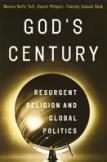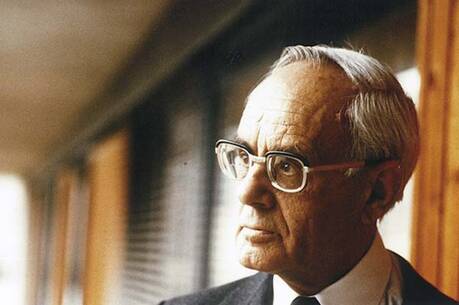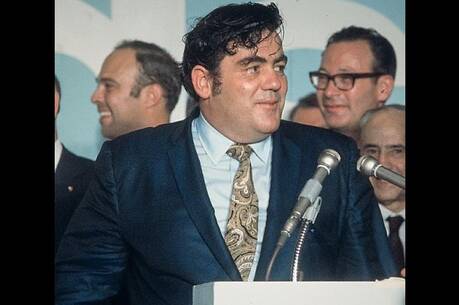An Influential Force
Back in the 1960s, there was almost universal acceptance among social scientists of the “secularization thesis,” the belief that as societies became more modern—more economically developed, technologically sophisticated, democratic, etc.—they would become increasingly secular, to the point that religious belief would virtually disappear. As a result, social scientists and the policy makers who looked to them for guidance were surprised by the prominent political role of religion in the late 20th and early 21st centuries, whether in fostering the collapse of Communism or inspiring terrorism. In God’s Century, the political scientists Monica Duffy Toft, Daniel Philpott and Timothy Samuel Shah (who teach at Harvard, Notre Dame and Boston University, respectively) argue that the secularization thesis has been refuted by the events of the past four decades in which we have witnessed a resurgence on a global scale not simply of religious belief but of robust political engagement by religious actors. They further contend that this resurgence of politically engaged religion gives every indication of continuing into the foreseeable future.
To explain this rise in politically assertive religion, and why in some cases it assumed peaceful and democratic forms while in others it assumed violent forms, the authors focus heavily on two key variables: 1) political theology and 2) the type of relationship existing between religious authority and political authority. Political theology refers to “the set of ideas that a religious community holds about political authority and justice.” Religious communities vary widely in the kinds of political theology they embrace. Some seek a theocratic control of the state; others emphasize personal piety so strongly that they eschew all political involvement; still others urge active citizenship for their members while insisting on a sharp distinction between religious and political authority. Differences also exist among religious communities regarding the acceptability of violence, with some taking a pacifist position, others reluctantly accepting the use of violence in special circumstances, as in the just-war tradition, and others accepting violence as a legitimate way to advance their religious objectives.
Similarly important is a religious community’s relationship with political authority. Consensual independence obtains when “religion and state enjoy autonomy from each other and are mutually content with this autonomy.” The classic example is the United States.
Conflictual independence prevails where a religious body manages to carve out a sphere of independence despite vigorous pressures by the state to control it, as in the case of the Catholic Church in Communist Poland.
Consensual integration is characterized by mutual support between the state and the dominant religion, as in the case of present-day Iran.
Finally, conflictual integration exists where religion becomes so integrated with the state as to lose all autonomy, as with the Orthodox Church in Soviet Russia.
Having laid out these categories, the authors devote a chapter to “the rise of politically assertive religion.” They contend that prior to 1500, and despite important differences, the relation of Buddhism, Islam, Hinduism and Christianity to political authority was one of consensual integration, but that in the ensuing centuries their autonomy steadily diminished until by the late 18th century and up through the mid-20th century their relationship to the state had become one of conflictual integration. With the state so dominant, the secularization thesis seemed confirmed. Yet late in the 20th century, aspects of modernization itself, like globalization, advanced communications technology and democratization, all contributed to religion’s political resurgence by giving religious communities the freedom to operate and organize politically, to promote their beliefs and to receive support from their co-religionists in other countries.
Drawing upon an enormous range of data and concrete examples, Toft, Philpott and Shah then discuss the influence of religion over the past four decades on global democratization, terrorism, civil wars and work for peace and justice, demonstrating the importance in each case of a religious actor’s political theology and its level of independence from the state. For example, in discussing the prominent role of the Catholic Church in fostering the Third Wave of democratization that took place from 1974 to 1991, they note the church’s adoption at the Second Vatican Council of a political theology committed to human rights and political freedom, including religious freedom, as well as its decision to reject consensual integration as its model of church-state relations in favor of one closely resembling consensual independence. This new stance, coupled with its transnational organization and formidable resources, enabled the church to be extremely effective in promoting democratization around the world.
Religiously inspired terrorism, meanwhile, often results from a repressive regime that privileges a particular faith or branch of a faith to the exclusion of others. If the excluded faith feels it should be privileged instead and has a political theology that embraces violence for religious ends, then religiously inspired terrorism may result. A case in point is Saudi Arabia’s privileging of a particular brand of Islam, the Wahhabi school, which gave rise to an Islamist opposition that ultimately led to the global terrorism of Al Qaeda.
Of course, where political theology is concerned, there is considerable variation among and within different faiths. For example, as the authors note, despite Vatican II’s endorsement of democratization, there were those in the church like the Argentine hierarchy who resisted this development. Similarly, Islam contains a wide range of perspectives, prominent among which is Sufism, which rejects violence and promotes tolerance.
God’s Century is a very rich and illuminating work to which it is impossible to do justice in a brief review. It will be read with profit by social scientists, students of religion and policy makers.
This article also appeared in print, under the headline “An Influential Force,” in the April 25, 2011, issue.








